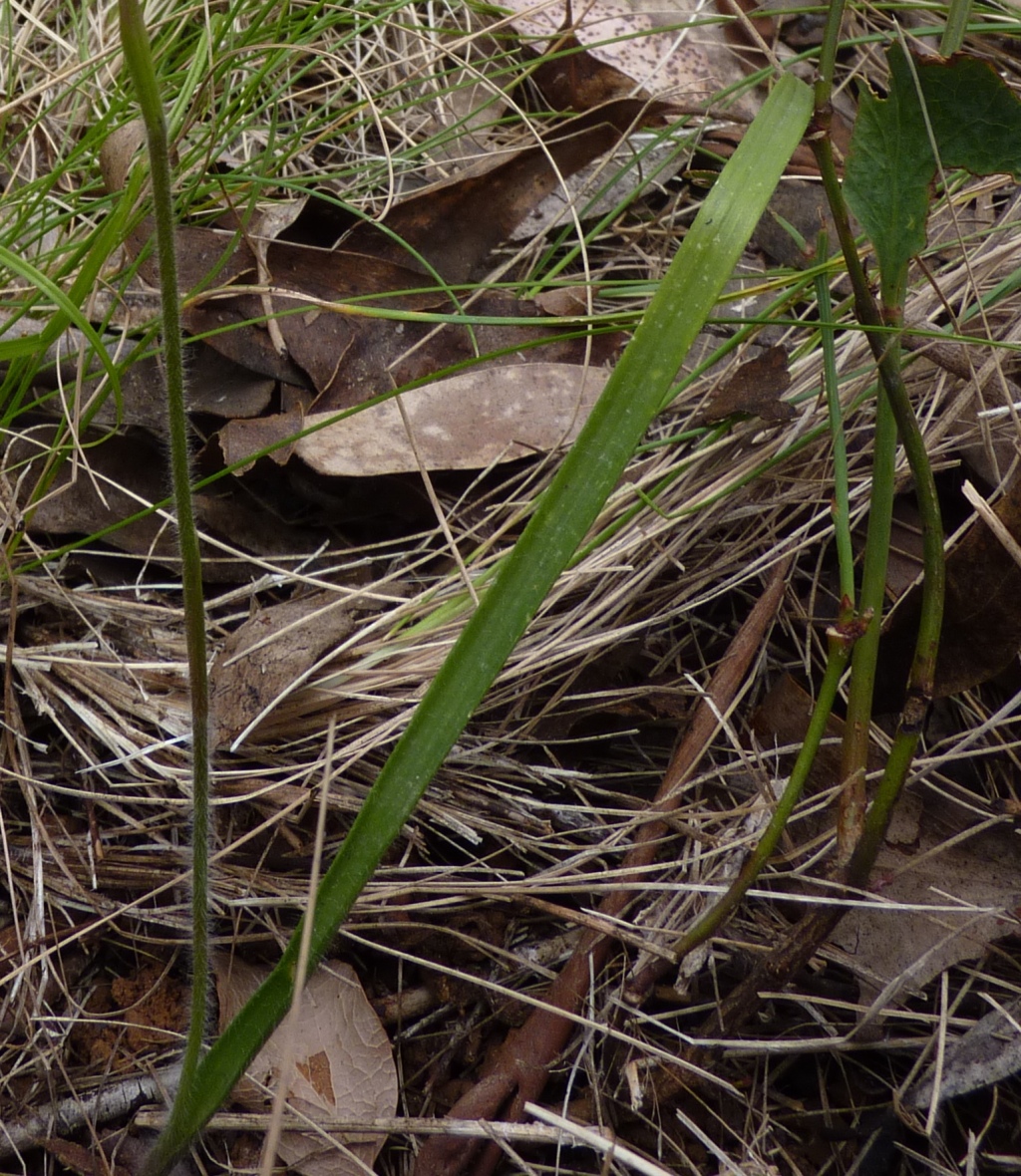Caladenia alpina
R.S.RogersFlowering stem relatively stout, 7–28 cm tall, often reddish. Leaf elliptic-lanceolate, 9–28 cm long, 5–8(rarely to 13) mm wide, thick and fleshy, dark green to reddish, sparsely hairy to almost glabrous. Flowers 1–3, white, externally pinkish-red to almost maroon; ovary 7–10 mm long; perianth segments 12–20 mm long, broad, apex rounded or acute, with short point, outer surfaces with sessile or stalked crimson glands; dorsal sepal incurved and hooded, obovate, c. 4–8 mm wide; lateral sepals spreading or obliquely deflexed, elliptic, broader than petals, c. 3–6 mm wide; petals spreading, elliptic, slightly asymmetric. Labellum on short claw, obscurely 3-lobed, c. 9 mm long (when flattened), pale, with prominent, dark red or purple spots and transverse bars; lateral lobes with margins entire or undulate; mid-lobe tightly recurved, shortly triangular, margins bluntly toothed, apex acute; lamina calli in 4 well-spaced rows, extending from base to apex, becoming sessile and irregularly spaced towards apex, clubbed, yellow or whitish, granular. Column incurved, widely winged above, spotted or streaked with red; anther with short point. Flowers Nov.–Jan.
GGr, NIS, EGU, HSF, HNF, MonT, HFE, VAlp. Also NSW, ACT, Tas. Grows in high-altitude (usually above 1000 m) forest, sub-alpine woodland or alpine tussock-grassland, mainly in the eastern highlands with outlying occurrences in the Grampians.
The large fleshy leaf, broad perianth segments and habitat of Caladenia alpina distinguish it from all other species of Caladenia.
Entwisle, T.J. (1994). Orchidaceae. In: Walsh, N.G.; Entwisle, T.J., Flora of Victoria Vol. 2, Ferns and Allied Plants, Conifers and Monocotyledons, pp. 740–901. Inkata Press, Melbourne.
 Spinning
Spinning

